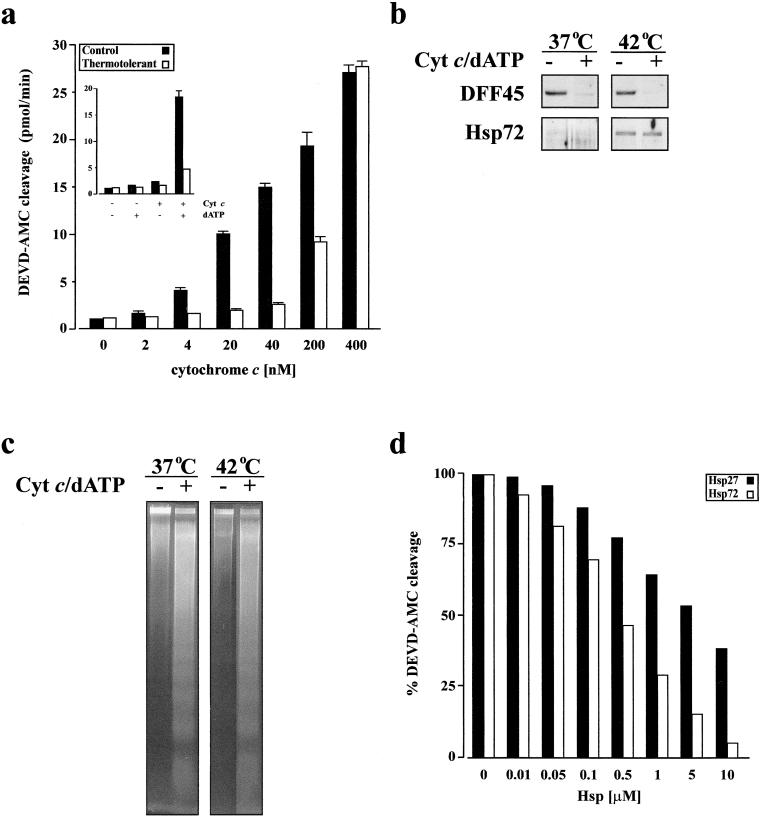Fig 5. Resistance of cytosolic fractions from thermotolerant cells to cytochrome c/dATP--stimulated caspase activation. Cells were incubated at either 37°C or 42°C for 1 hour and allowed to recover for 12 hours at 37°C. Cytosolic fractions were prepared and incubated with cytochrome c and dATP (1 mM) for 60 minutes at 30°C. (a) The caspase-3-like activity (DEVDase) induced by addition of various concentrations of cytochrome c and dATP in cytosolic fractions was assayed using DEVD-AMC substrate. Inset: the caspase-3-like activity within the cytosols was induced only when they were incubated with both exogenous cytochrome c (100 nM) and dATP. (b) Western blot analysis of DFF45 cleavage (top) and its disappearance in the cytosolic fractions after activation with 100 nM cytochrome c and 1 mM dATP, and (bottom) Hsp72 to demonstrate induction of Hsps in thermotolerant cells. (c) Cytosolic fractions treated with or without cytochrome c (100 nM) and dATP (1 mM) for 60 minutes at 30°C before co-incubation with isolated nuclei. The nuclear DNA was then subjected to agarose gel electrophoresis. The typical internucleosomal DNA fragmentation is detectable in isolated nuclei co-incubated with activated cytosolic fractions. (d) Effect of recombinant Hsp27 and Hsp72 on caspase-3-like activation stimulated by cytochrome c (100 nM) and dATP (1 mM) as determined by DEVD-AMC cleavage

An official website of the United States government
Here's how you know
Official websites use .gov
A
.gov website belongs to an official
government organization in the United States.
Secure .gov websites use HTTPS
A lock (
) or https:// means you've safely
connected to the .gov website. Share sensitive
information only on official, secure websites.
